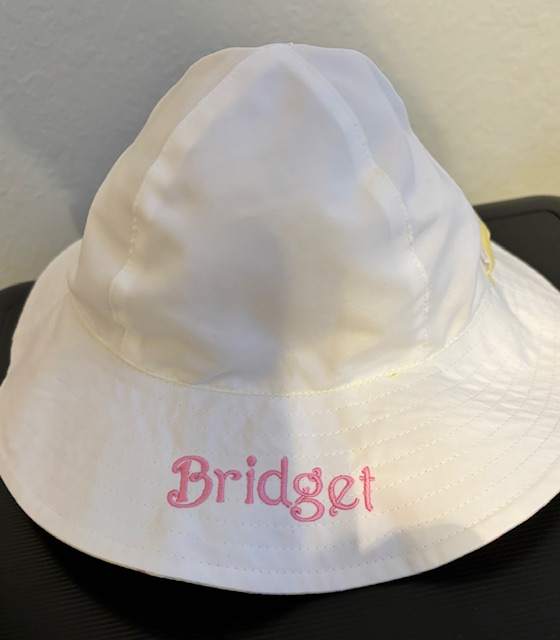The Art of Customized Needlework: Unlocking the Secrets to Creating Special and Unforgettable Designs
The tricks to creating customized embroidery designs that captivate the eye and leave a lasting impact lie in a fragile equilibrium of technique, creativity, and attention to information. As we dig into the world of customized embroidery, we discover the nuanced interplay between string choice, stitch complexity, and style customization that boosts a plain garment to a work of art.
Selecting the Right Needlework Threads
When selecting needlework strings, what key factors should you consider to guarantee the very best outcomes for your custom layouts? The selection of embroidery thread is vital in identifying the last outcome of your embroidered layout. Among the main considerations is the product of the string. Different materials such as cotton, polyester, rayon, and silk offer varying levels of sheen, resilience, and texture. It is crucial to choose a thread product that complements the fabric you are stitching on and straightens with the desired look of the style.
In addition, the weight or density of the string plays a significant duty in the appearance of the needlework. Thicker threads can add dimension and appearance to your layout, while finer threads are perfect for detailed details and tiny message. Furthermore, taking into consideration the shade fastness and washability of the string is essential to make certain that your custom-made layouts maintain their quality and vibrancy over time. By thoroughly examining these factors and choosing high-grade threads that satisfy your particular demands, you can boost the aesthetic allure and durability of your stitched creations.
Exploring Various Stitch Methods
To delve into the world of 'Checking out Different Stitch Strategies', one should comprehend the details and nuances that each sewing approach gives the art of needlework. Various stitch strategies not just include aesthetic rate of interest but likewise add to the overall texture and measurement of the style. One prominent stitch technique is the satin stitch, which includes very closely packed parallel stitches to develop a smooth and glossy surface, perfect for filling out forms and developing strong describes.
On the various other hand, the backstitch is a versatile strategy commonly made use of for laying out and including great information. It includes stitching in reverse to create a strong line of needlework. In addition, the French knot stitch adds a responsive component to styles, excellent for developing distinctive accents like blossom centers or attractive touches.
Checking out different stitch techniques allows embroiderers to play with light, darkness, and depth within their styles, raising the More Help aesthetic appeal and imaginative top quality of their embroidery projects. By understanding various stitching techniques, one can unlock countless opportunities for developing unique and unforgettable custom-made needlework items.
Incorporating Personalized Layout Aspects
Having actually discovered the intricacies of various stitch techniques such as the satin stitch, backstitch, and French knot, the emphasis currently shifts in the direction of incorporating tailored layout components in custom-made needlework tasks. Customized design aspects play an important duty in making needlework projects absolutely unique and unforgettable.
An additional means to integrate customized design aspects is by including symbols or concepts that hold special definition to the recipient or show their rate of interests and character. Including a preferred flower, animal, or hobby-related icon can make the embroidery layout more meaningful and individualized. Furthermore, selecting colors that resonate with the recipient or straighten with the desired style can better improve the customization of the embroidery task.
Mastering the Art of Color Sychronisation
One trick element of color sychronisation is understanding shade theory. This includes knowing how various shades communicate with each various other, the emotions they communicate, and how they can be integrated to produce aesthetically attractive styles. By applying color theory principles, embroiderers can golden needle tailor develop unified color palettes that enhance the general look of the design.
Furthermore, paying interest to comparison is essential in color coordination. Using contrasting shades can help certain elements of the layout pop, improve view it readability, and create a visually vibrant embroidery piece. By mastering the art of color coordination, embroiderers can elevate their designs and develop remarkable pieces that reverberate with customers and viewers alike.
Enhancing Texture With Advanced Needlework Stitches

French knots, as an example, are perfect for adding small, increased dots to your style, imitating the appearance of grains or producing a textured surface. Bullion knots, on the other hand, can be made use of to develop twisted, ropelike components that add a lavish feeling to the embroidery. Seed sewing includes little, scattered stitches that can fill out areas with a polychromatic structure, while turkey job produces cosy, dimensional accents similar to pet hair or vegetation. Try out these advanced embroidery stitches allows you to press the borders of typical needlework and create truly distinct and aesthetically attractive structures in your layouts.
Final Thought
In conclusion, the art of customized embroidery entails a combination of selecting the right threads, checking out numerous stitch methods, incorporating customized layout components, mastering color coordination, and improving appearance with innovative stitches. By understanding and executing these crucial elements, embroiderers can create distinct and memorable layouts that display their imagination and skill. Embroidery enthusiasts can open the keys to producing beautiful and custom items that attract attention and leave an enduring impression.